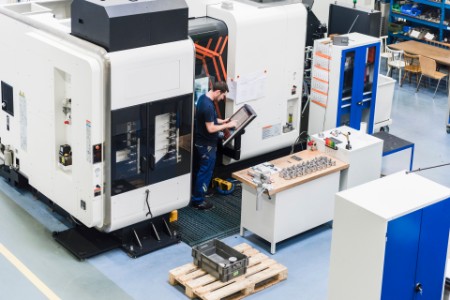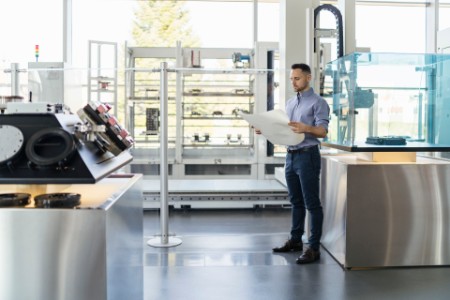
Chapter 1
The hidden risks and benefits of doing good
The legal, tax and workforce issues arising from rapid conversions are sometimes unexpected – and always important.
As these corporate responses to COVID-19 proliferate, businesses trying to help are encountering new and sometimes unexpected tax, legal and workforce implications. Understanding how to navigate them can help distribution of their new products, mitigate costs associated with the sudden conversions and control risks.
Jan Horak, a spokesman for Razer, says that the company moved to get its manufacturing line up within 30 days, while concurrently sourcing raw materials and machine parts. “The challenge with working on such a tight timeline has been to ensure proper internal procedures such as budgeting, legal documentation and certification processes, which typically take time, are strictly adhered to while balancing the need for speed,” Horak says.
Kimberly Gibson, co-owner and self-titled “Chief Mischief Officer” at IC3D, a Columbus-Ohio based on-demand 3D printing company IC3D that usually takes commissions to produce everything from furniture to prosthetics to toys, says her business first considered reverse-engineering patented ventilators and even consulted an attorney to explore what was permissible (the ventilator owner ultimately made its designs open-source in response to the virus).
“Then the personal protective equipment (PPE) shortage became severe,” Gibson says. After engineers at another company created an open-sourced design for a new visor that could become a face shield in an effort to help overwhelmed medical professionals in New York City, IC3D made some improvements and took a prototype to Veteran’s Hospital in Columbus, Ohio. Using regulatory acumen and government contacts, the company was able to get its shield approved by the US National Institute for Health, the US Food and Drug Administration and the US Veteran’s Hospital Administration in just three days. But then it encountered another issue.
“The other pieces of the mask – the clear shield that fits into the visor and elastic bands to fasten them to your face – became a supply chain challenge,” Gibson recalls. So, the company reached out to a network of 3D printers – mostly individual enthusiasts around the country who it eventually paid to help produce shields and masks. And then suppliers of raw materials interested in supporting the effort began stepping up to provide discounted materials. Finally, everything was in place to allow hospitals to print new shields on site in under an hour.
These experiences are common for businesses stepping up to help, according to Gijsbert Bulk, EY Global Director of Indirect Tax. “These companies have fantastic ideas and are making a difference. But often there are a number of important steps they can take to most effectively execute their ideas.”
Bulk says there are five areas on which companies undertaking benevolent conversions should be focusing: tax implications, cash-flow considerations, logistical concerns, risk and law issues and managing people.

Chapter 2
Five areas to consider when converting operations
Take a careful look at your actions from the perspectives of tax, cash flow, logistics, legal, and people.
Tax implications
Most of the tax considerations can help save money or offset the start-up costs of conversions. For starters, there are stimulus measures to consider, as governments commit to protecting their economies from the damage caused by the crisis, whether through spending, tax cuts, investment incentives or changes to filing deadlines.
While many of the stimulus measures are aimed at helping individuals, there are many business provisions, including changes to loss limitation rules and charitable deduction limits. Some governments may compensate businesses for tax losses arising from expanded operations, while others may offer credits or offsets for new expenses related to continuing operations.
But it’s not just stimulus. Tax laws long on the books can be used to help with start-up costs arising from converting production. Methods vary by jurisdiction and range from accelerated recovery periods for capitalization, immediate expensing or tax credits. Conversion costs of manufacturing facilities, including the interplay with IT systems and design processes for remote workers, may also qualify for existing research and development credits.
In addition, rules are changing rapidly concerning the imposition of value-added tax, goods and services tax, and sales and use tax. The changes vary as much as the jurisdictions imposing them. Some specific issues include recovery on donated goods (non-economic activities), the treatment of new products and raw materials, reduced rates or exemptions that may be available and repayments on increased purchases for imports, capital goods and start-up costs.
Cash flow
In addition to new COVID-specific tax measures, production conversion may result in temporary business activities that qualify for newly adopted or existing grants and incentives offered by governments. This could include the acceleration of longer-term incentives, the conversion of tax incentives to cash grants or refundable credits, or a reduction in the “typical” time commitments to maintain qualifying employment or investments.
Additionally, many jurisdictions have delayed the due date for periodic payments, and many are also offering time-to-pay arrangements. Also, companies can prioritize return filing in jurisdictions where they will receive a refund or can take advantage of net operating loss changes. Cash flow can be enhanced by accelerating deductions or deferring the recognition of income.
Logistical concerns
As Gibson discovered, new products and the need for new raw materials can raise supply chain challenges. At a bigger scale, particularly when products are being shipped across national borders, new customs and export licenses may be required. Additionally, new tariffs or tax rates may apply on those new products and raw materials, and they may face non-tariff regulations. There also may be challenges related to the movement of stock in and out of warehouses and distribution centers related to both new needs and COVID-19 disruptions.
Transfer pricing agreements may also need to be revisited in light of changing circumstances, including: decreases in profitability, the carrying cost of inventory, changing roles and responsibilities, the cost share treatment of extraordinary costs, and the allocation of risk and cost of supplier failure.
Related article
Law and risk
Creating new products can also create new legal risks to be considered and mitigated. For example, some companies may need to consider whether they are taking on additional product liability exposure and take steps to protect themselves.
Also, as companies respond quickly and reach out to others doing the same, they will form new relationships with third parties. Those partners may consider temporary or enduring joint ventures or the creation of new legal entities.
Finally, from a legal perspective and depending on public pressure to make available life-saving designs and formulas, businesses may still want to take measures to protect their IP. Conversely, companies should endeavor to respect IP, including considering new licensing arrangements. Cyber security and data privacy support continue to be of great importance.
Companies in general should be contemplating the option of applying the principles of force majeure to assess suspension or termination of their commercial contracts. Legal positions on force majeure and how it affects parties who are unable, or may be unable, to perform their contractual obligations due to COVID-19 and the associated responsive measure differ across the world.
Managing people
The health, safety and protection of employees and customers is paramount. Policies should follow the best health and wellness guidance as well as all government restrictions and recommendations. Emotional and mental well-being are also critical. This is particularly true of employers asking workers to stay on during lockdown periods to produce life-saving products or employees managing increased personal commitments while simultaneously transitioning to remote working.
“It’s clear organizations need to fundamentally shift their collective mindsets, to one which I believe promotes and recognizes a ‘care for self, care for others’ mentality first,” says Mike Bertolino, EY Global People Advisory Services Leader.
As companies begin the process of returning their workers to normal operations, they should ensure that the workforce has the skills and training necessary to convert production safely and efficiently. And they should be sure to comply with rapidly changing laws and regulations affecting immigration and worker mobility or employer obligations around the world.
Workforce planning must address the very real temporary constraints on the availability of personnel and also align to short- and long-term goals. For example, locations heavily impacted by COVID-19 may not be as suited to activities as other locations, even if they are business-critical locations.
A version of this article was first published in Bloomberg Daily Tax Report. Reproduced with permission. Published May 26, 2020. Copyright ©2020 The Bureau of National Affairs, Inc. (800-372-1033) www.bloombergindustry.com
Summary
Businesses around the world are converting manufacturing lines to help produce equipment need to fight COVID-19. They need to understand five implications for doing so: tax, cash flow, logistical, law and risk and workforce.


